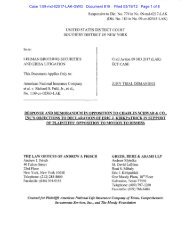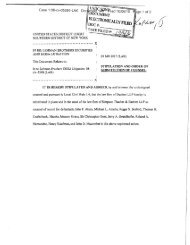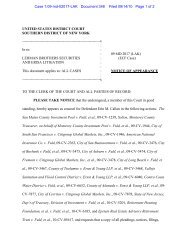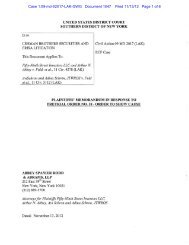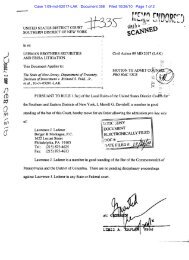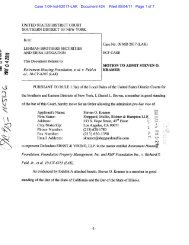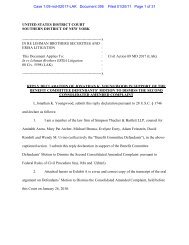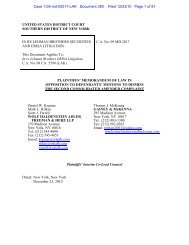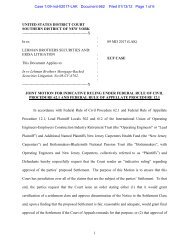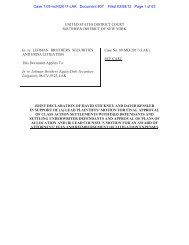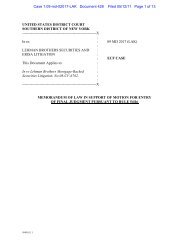Third Amended Complaint - Lehman Brothers Securities Litigation
Third Amended Complaint - Lehman Brothers Securities Litigation
Third Amended Complaint - Lehman Brothers Securities Litigation
You also want an ePaper? Increase the reach of your titles
YUMPU automatically turns print PDFs into web optimized ePapers that Google loves.
with regard to Level 3 inputs, SFAS 157 requires that unobservable inputs reflect the reportingentity’s view as to the assumptions market participants would use in pricing the asset.a. Archstone Valuations91. In May 2007, <strong>Lehman</strong>, along with Tishman Speyer, agreed to acquire Archstone, apublicly traded REIT involved in the acquisition, operation and development of apartmentbuildings. The deal closed on October 5, 2007. <strong>Lehman</strong> funded roughly $5.4 billion ($3 billion indebt and $2.4 billion of equity) of the $23.6 billion purchase price, making it <strong>Lehman</strong>’s singlelargest commercial real estate investment. <strong>Lehman</strong> intended to syndicate, or sell, large portions ofits debt and equity interests after the closing, but was ultimately unable to do so. By the time theArchstone deal closed on October 5, 2007, the stock prices of Archstone’s publicly traded peers haddeclined over the summer and early fall of 2007, indicating that Archstone’s enterprise value haddeclined as well.92. To value its Archstone positions, <strong>Lehman</strong> primarily used a discounted cash flowmodel that determined value by reducing future expected cash flows to their present value byapplying a discount. The cash flow was based on various assumptions, including rent growth, exitcapitalization rates, and exit platform value. <strong>Lehman</strong>, however, failed to consider marketinformation in these assumptions. For example, <strong>Lehman</strong> used a rental growth rate that was 1.9% to3.5% higher than third-party projections for apartments within Archstone’s primary markets, usednet operating income growth rates that were 100% higher than the average growth rate forapartment REITs over a 15 year period, and failed to consider the higher capitalization rates thatwere being used for other comparable publicly traded REITs.93. Because <strong>Lehman</strong> failed to consider market-based information in assessingArchstone’s value, the statements that (i) “[f]inancial instruments and other inventory positionsowned . . . are presented at fair value” and (ii) “private equity investments are measured at fairvalue” – both of which were included in <strong>Lehman</strong>’s 2007 10-K, 1Q08 10-Q, 6/9/08 8-K and 6/16/088-K – were materially false and misleading when made with respect to Archstone. In addition,-29-



